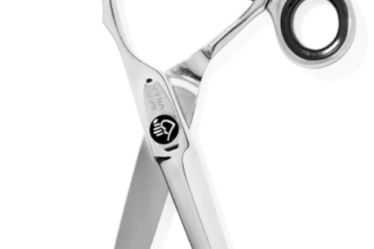
Having spent years living in creaky old apartments with weak heating and poor insulation, I’ve spent whole winters with thermal underwear practically glued to my skin.
The base layers I’ve worn have mostly belonged to Uniqlo’s HeatTech line: inexpensive tops, leggings and socks that have become a sort of staple for cold-weather urban dwellers. Uniqlo says the products – which come in standard, “Extra Warm” and “Ultra Warm” varieties – use “cutting-edge fiber technology” to “wick the moisture from the human body and convert the kinetic energy into heat”. In fact, Uniqlo doesn’t actually call HeatTech a base layer. It’s collaborated with designers like Alexander Wang and JW Anderson on special edition HeatTech, and claims the products are so warm that it makes “multiple layers of clothing … a thing of the past”. One of their ad campaigns shows a man walking in just a light blazer and T-shirt in 3C (37F) in downtown New York.
With frigid temperatures arriving on top of newly soaring fuel costs, it’s HeatTech season again. At Uniqlo stores from Manhattan to Tokyo, the items are already flying off the shelves (they’re often gone by the end of October). Demand is particularly high this year as money-saving experts are suggesting that people who are worried about energy bills invest in base layers with some Brits resorting to stockpiling thermal underwear.
Since its launch in 2003, Uniqlo has sold more than 1bn pieces of HeatTech, boasting that the fabric used in these items “would stretch 700,000 km, or 17.5 times around the globe”. Uniqlo has even sold HeatTech from airport vending machines.
But how much of HeatTech’s technology is actually tech, and how much is just a marketing spin on good old-fashioned thermals, and our centuries-old knowledge about staying warm?
To learn how base layers are supposed to work, I spoke to Drew Hansen, a 40-year-old outdoor expert and gear reviewer who says he became obsessed with cold weather survival after experiencing hypothermia as a teenage hiker. Traditionally, base layers have a specific job within a three-layer system, he said. “The base layer is not designed to keep you warm; It’s designed to stop you from cooling down. That sounds kind of the same, but it’s not.”
The job of a base layer, Hansen said, “is primarily wicking: to get sweat off your skin and out into the environment”, so that the moisture no longer robs your body of heat.
What actually keeps you warm is insulation: typically a separate layer worn over the base layer to keep the warm air generated by your body from escaping. A third layer, called the outer layer, shields you from the elements. Here is where high-tech features really make a difference: the best outer layers are made of “breathable” textiles like Gore-Tex, which keep wind and rain from getting in while letting your sweat out.
For the base layer, much cheaper materials can be incredibly effective, but it’s important to choose the right one, Hansen said. Cotton makes a poor base layer: while it traps air – good for insulation – it absorbs water and dries slowly which forces your body to give up even more heat to make the water evaporate. It’s why cold weather hikers have a saying: “Cotton kills.”
Instead, outdoor enthusiasts swear by synthetics like polyester, which has tiny channels that “wick” moisture from your skin to the fabric’s surface. Others are ardent believers in wool, which naturally pulls moisture into its fibers and lets it evaporate off: “you can’t feel it against your skin,” Hansen said.
The promise of newer base layer products with big R&D budgets is that they’ll wick sweat and insulate you. In hiking circles there’s a lot of hype around Smartwool, an upmarket brand whose signature “Intraknit” line uses a blend of soft Merino wool and polyester. “Everything starts next to the skin,” said Sue Jesch, the company’s design director. “You could be wearing a trash bag over whatever base layer you choose, but if you don’t have what’s next-to-skin to help keep your microclimate or thermoregulation intact, then you’re not going to be very comfortable.”
Uniqlo’s HeatTech also tries to wick sweat while insulating, using a much cheaper all-synthetic blend. Each HeatTech item is made of polyester for moisture wicking, mixed with fibers of micro-acrylic and rayon (a material made from the cellulose of trees) spun to one-tenth the width of a human hair. According to HeatTech’s product page, “11-micron fibers capture the energy of water particles released from the body at the nano level and convert this energy into heat.” Additionally, “H2O molecules move rapidly between the skin and the HeatTech fabric,” which “creates kinetic energy that can be converted to thermal energy”. (Uniqlo’s rep didn’t respond to my question about didn’t offer any more detail about how this process actually works; Hansen said he would take the claim with a “grain of salt”.)
Contrary to the conventional wisdom on layers, Uniqlo markets HeatTech as something you can wear standalone. According to a Uniqlo rep who responded via email, since launching HeatTech in 2003, it has worked with Japanese chemical engineering giant Toray to make HeatTech fibers “even finer and more concentric, allowing for a denser concentration of air pockets that improved functionality”. That led to the launch of its thickest and heaviest HeatTech in 2016, the so-called “Ultra Warm” level, which offers “approximately 2.25 times greater warmth than standard HeatTech … while reducing the need for bulky layers”, the rep said, giving the example of a new ribbed HeatTech top which can be a layering piece or “ideal on its own”.
Hansen said HeatTech’s promises of doing it all may hold up for casual wearers, like people trying to stay warm indoors.
“Theoretically – because synthetic materials wick so well – you can continue to make them thicker to add some insulating properties. And you’d get a bit of both wicking and insulating even just sitting at your office, because if you take off a sock at the end of the day, your feet always have some moisture.”
But for more strenuous outdoor use, something like HeatTech would likely trap too much moisture, “because it’s a thicker material. And it’s really not making you warmer, because again, you’re holding that moisture. A different layer should be taking that responsibility.”
I decided to put HeatTech to the test myself. Over the weekend, I went for a long hike in the brisk fall weather. For about half of the journey, I wore a traditional set of layers: a polyester undershirt under a rugged cotton button-up shirt. For the other half, I wore a single Uniqlo HeatTech long-sleeved top.

The difference was noticeable. Both outfits kept me equally warm. But I felt dry and breezy wearing the layered outfit, whereas the HeatTech felt stuffy, and made my underarm area feel clammy. I felt relieved when the HeatTech came off; I could’ve worn the other outfit all day.
The experience seemed to validate what Hansen told me: that even for hardcore users, finding the right base layer is less about cutting-edge tech and more about understanding the age-old principles of staying warm.
“When you’re looking at companies, you’re looking for ones to speak true words, not these sizzle kind of words that don’t really have don’t have a lot of science behind them.
“You look at seal hunters on the coast of Greenland or Alaska, they were already leaps and bounds ahead on all this. This stuff has been tried and true for hundreds, if not thousands of years,” Hansen said. In 1995, a team of Canadian researchers compared modern military and expedition clothing with a traditional Inuit clothing system made from two layers of caribou skin, and found the caribou outfit kept wearers significantly warmer (although, the researchers noted, many of the testers “mentioned that they were unaccustomed to the gentle odour of animal hair”).
Hansen says one of his favorite hacks for maintaining heat is something that doesn’t require any special tech at all: changing his socks multiple times a day.
“Your feet produce more moisture than any spot on your body,” he said. Because most people wear cotton socks, the socks tend to retain moisture – causing you to lose heat. “But even hikers who use wool socks, we change them out a couple times a day, and definitely before bed.”



